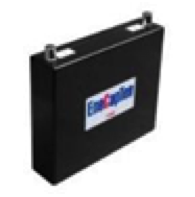Following on from part 1, part 2 and part 3 here is … part 4 of this deep dive series on the Bull’s BCS Architecture.
In the previous post I focussed on Intel RAS features that Bull’s BCS Architecture is leveraging to make the memory more reliable and available.
In part 4, I will cover additional features leverage by Bull’s specific server architecture. Some of these features address directly customers who require the level of reliability, availability and serviceability they could only find in expensive mainframe systems.
Reliability
Reliability addresses the ability of a system or a component to perform its required functions.
Dual Path IO HBAs
Each bullion module provides the ability to connect up to 3 HBA’s per IO Hub aka IOH which is an Intel component that provides the interface between the IO components such PCIe buses and the Intel QPI based processors. Those 3 HBA’s can then be mirrored inside the same bullion module to the HBA’s attached to a second IO Hub. This teaming gives you a fault tolerant IO connectivity and associated with VMware’s Native Multipathing Plugin (MPP), you load balance the IO across the members of the teaming.
Availability
Availability of a system is typically measured as a factor of its reliability – as reliability increases, so does availability.
Active/Passive Power-supplies
The bullion servers are equipped with two 1600W power supplies, which are 80+ Platinum level certified. They provide a full N+N redundancy for maximum availability.
For its mainframe systems, Bull has developed a patented solution based on an active/passive power supply principles. This patented solution provides the highest efficiency rate possible, regardless the requirements and still provide a maximum uptime possible.
This technology from mainframe systems is now available on the bullion.
What is it exactly? The unique active/passive power supply solution provides an embedded fault resiliency against the most common electrical outages: micro-outages.
Rather than having to rely on heavy and expensive UPS systems bullion servers are equipped with an ultra-capacitor which provides the ability to switch from the active to the passive power supply in case of failure, as well as being protected against micro outages.
The ultra-capacitor provides a 300ms autonomy, sufficient to switch-over or to avoid application un-availability during micro-outages.
The passive PSU rotates and it is frequently tested with failover and failback runs to guarantee its availability in case of a failure of the active PSU.
Bull announces a global consumption of 20-30% below competition.
Serviceability
It refers to the ability of technical support personnel to install, configure, and monitor computer products, identify exceptions or faults, debug or isolate faults to root cause analysis, and provide hardware or software maintenance in pursuit of solving a problem and restoring the product into service.
Empower Maintainability
To ease the replacement of the most frequently failing motorized components, such as the ventilators, power-supplies and disk-drives which are responsible for over 80% of hardware failures, with no impact whatsoever in the production on bullion servers since they is always a redundant part available to take over the failed one.
Replacing these components are now part of the Customer Replaceable Units (CRU’s). This program empowers you to repair your own machine. Other server vendors have the same policy actually. In situations where a computer failure can be attributed to an easily replaceable part ( a CRU), Bull sends you the new part. You simply swap swap the old part for the new one, no tools required. It is simple and a major advantage: really fast service for you and reduced support and maintenance fees.
Increase Availability
On the other side, there are components replaceable only by Support. They are part of the Field Replaceable Units (FRU).
To avoid downtime for the customer, and under the correct conditions, some FRUs can be excluded from the system at boot time: PSUs, processors, cores, QPI links, XQPI links, PCIe boards, embedded Ethernet controllers are among the elements which can be excluded at boot time and minimize downtime during serviceability.
RAS Monitoring
Each bullion module contains an embedded Baseboard Management Controller (BMC) for monitoring and administration functions. This embedded controller runs the Server Hardware Console (SHC).
Bullion servers offer the following built-in functions:
- SHC access to all of the module components by standard out-of-band (non-functional) paths – the I2C and SMBus interfaces.
- A dedicated network to interconnect all of the SHCs of a server without affecting the customer’s network.
- Dynamic communications between the SHC and the BIOS.
The SHC provides this information to vCenter or any other industry standard System Management solution, with support for IPMI, SNMP and other industry standard interfaces.
’nuff said with Bull’s BCS Architecture. It’s time to witness the power of the beast, it’s time to see the greenness of the monster. it’s time to meet the monster bullion ™ – Stay tuned!
Source: Bull, Intel, Wikipedia















